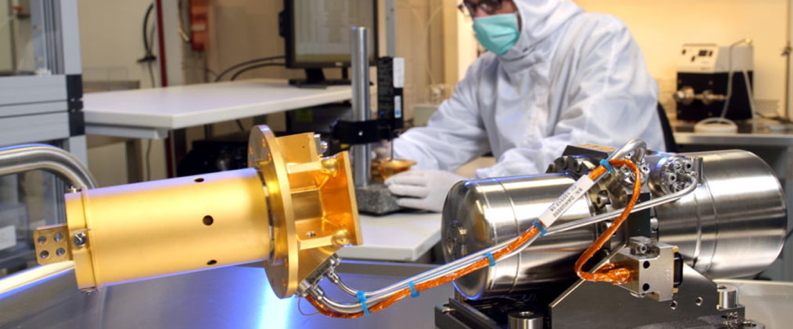The space environment is associated with specific constraints including the mechanical resistance related to rocket takeoff, lack of gravity and reliability that are among the most critical. In particular, the reliability constraint or the need of fault-free operation over durations typically from 5 to 10 years leads to the design of systems with non-frictional moving parts or even ideally no moving part at all. At the Low Temperature Systems Department (DSBT), we develop pulse tube cryocoolers that are characterized by the absence of cold moving parts and of which ESA has financed a number of developments at DSBT.
We have been developing pulsed tube cryocoolers for many years. The technology developed at DSBT, very close to Stirling coolers, is characterized by the absence of moving parts in the cold part. This makes this cooler more reliable and limits the level of exported mechanical disturbances (microvibrations) to the sensitive parts of the instruments that host them.
Between 2004 and 2006, a Large Pulse Tube Cooler (LPTC) was jointly developed with Air Liquide and Thales Cryogenics on behalf of ESA with the aim of cooling infrared detectors for earth observation missions. Its ability to generate about 2 watts of cooling power to 50 K fits well with the cooling needs of infrared detector arrays with very good signal-to-noise ratio. The first engineering model that we developed for the cryogenic cold finger was transferred to Air Liquide which qualified it for space applications. Many technological developments were necessary before the first model to go into orbit on an earth observation satellite. Twelve other models will join it soon in space on Meteosat Third Generation (MTG). These satellites will provide infrared images of the earth and sound the atmosphere to extract information on water vapor and temperature to improve weather forecasting.
Other developments on pulse tube cooler technology have lowered their operating temperature to about 10 K. These low temperature coolers are one of the essential building blocks for thermal architectures of future major astrophysical missions using detectors at very low temperatures.

Pulsed tube manufactured by Air Liquide under CEA license to cool the infrared detectors of MTG.